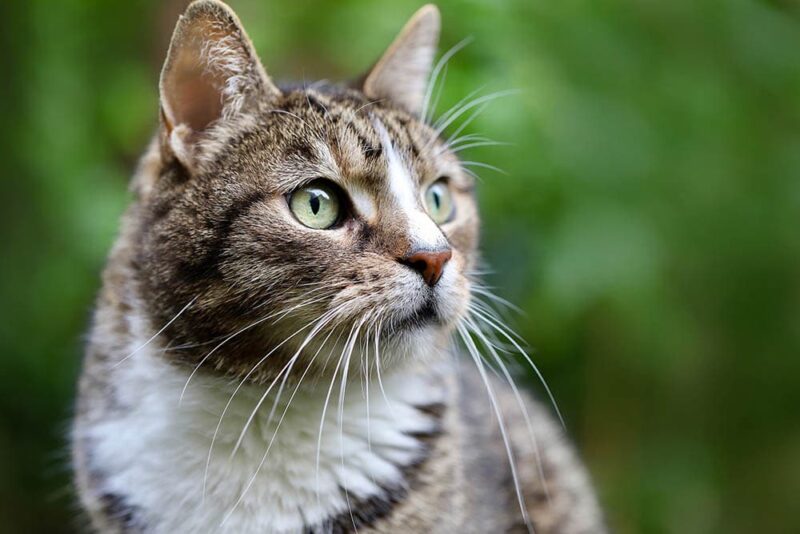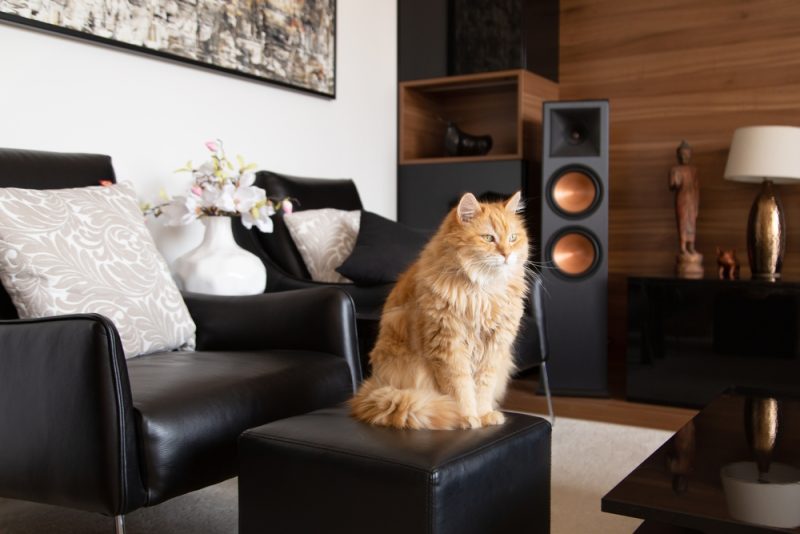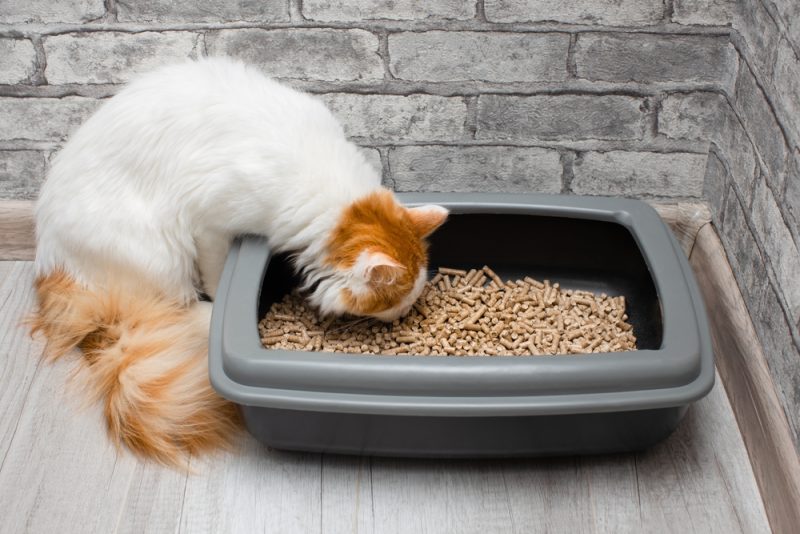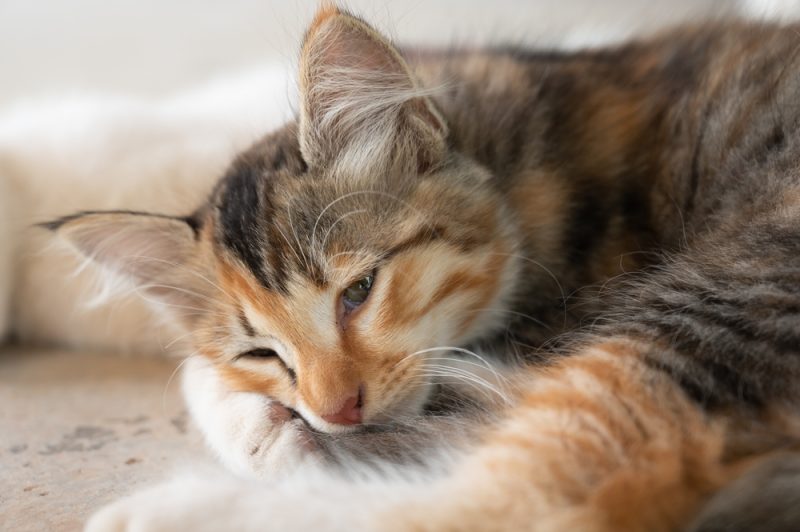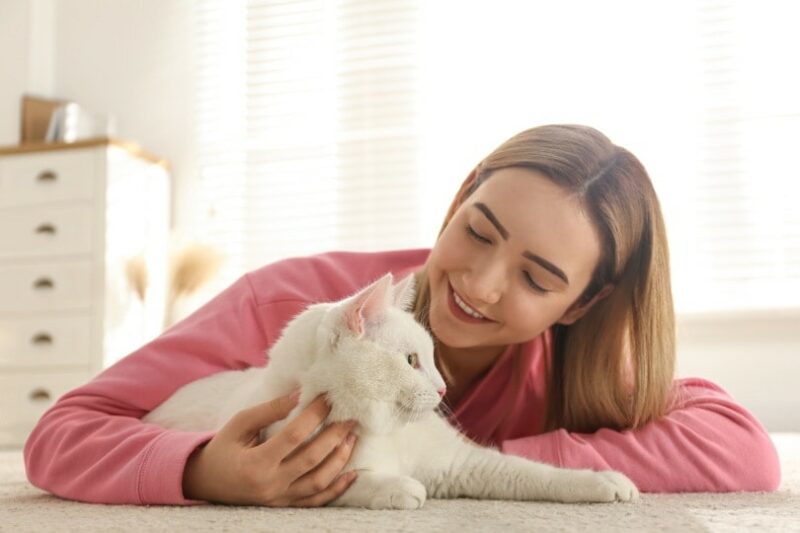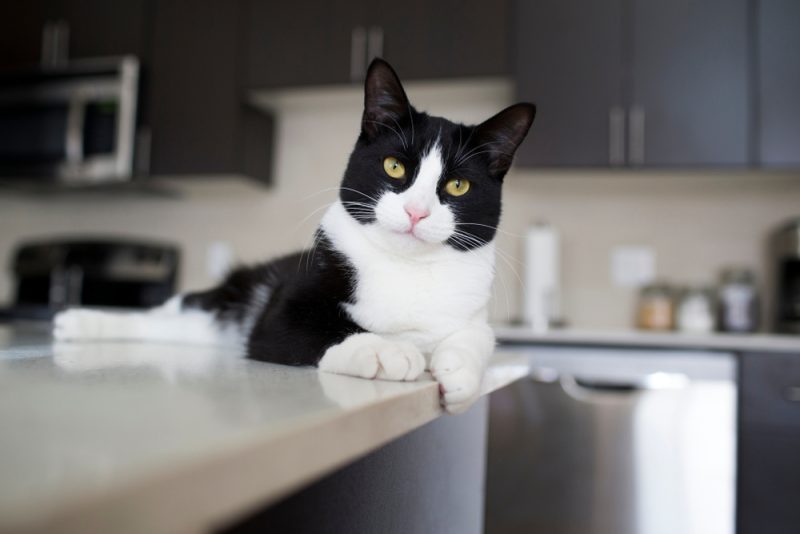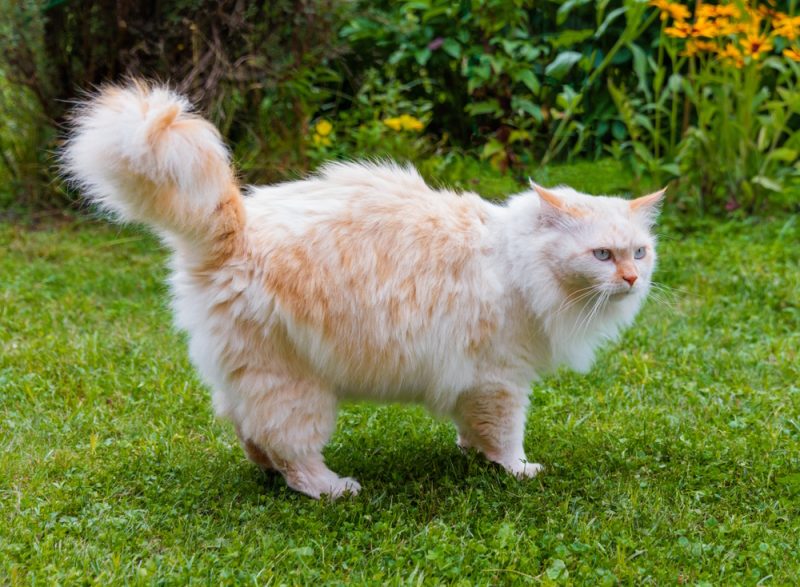Many of the cat breeds we know and love originated from Europe. These cats all have unique and distinguishing features that make them special—some are fluffy, and some are not so fluffy. Some are curly and some are smooth. Some are tiny and delicate while others are big and majestic. But they have one important thing in common—they’re all absolutely loveable!
In this post, we introduce you to and celebrate the diversity of these wonderful European cat breeds.

The Top 10 European Cat Breeds
1. Devon Rex

The Devon Rex is one of the world’s most distinctive cat breeds with a fairy-tale-like appearance. Devon Rexes have enormous, pointy ears, tiny faces, large, round eyes, and a small and delicate body with soft, curly (rex) fur. Their loyalty and people-loving tendencies have earned them a reputation for being almost “dog-like”, but the truth is that the Devon Rex is simply a very special and unique cat in their own right!
Devon Rexes first came about in the 1950s, when they were bred in beautiful Devonshire, England. The fact that Devon Rexes originate from such a quaint place with rolling hills and rugged cliffs really lends something more to the breed’s mythical, fairy-tale-like aura.
2. European Shorthair

The down-to-earth European Shorthair’s ancestors were ancient Roman cats often kept for their pest-control skills, but the breed as we know it today has its origins in Sweden. These cats are medium in size with a muscular, athletic appearance. They are somewhat stocky but well-proportioned (when their diet is kept under control, that is!) and come in a variety of colors including brown, black, fawn, beige, tortoiseshell, tabby, and more.
European Shorthairs are very popular around Europe and can be found in many homes, especially lounging out in the flowerbeds on a sunny day. If you’re interested in adopting one of these friendly, energetic, and hardy cats, you shouldn’t have a problem finding one in a shelter waiting for a loving new home.
3. Scottish Fold
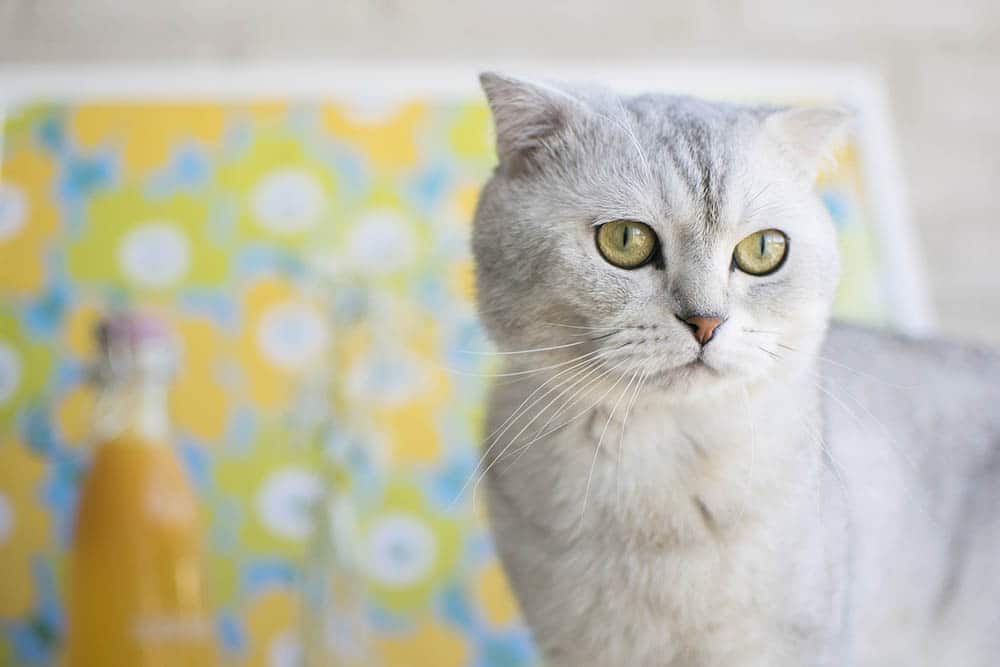
No prizes for guessing where this breed originates from! The first Scottish Fold was a barn cat called Susie who lived in Perthshire, Scotland. Scottish Folds are famous for their tiny folded-down ears and perturbed-looking eyes, which give them a distinctive owlish appearance. A medium-sized breed, the Scottish fold can be long, medium, or short-haired, and a variety of coat colorings are possible, including ash, white, blue, red, cream, and silver. Coat patterns also vary.
Temperament-wise, Scottish Folds are generally considered to be sweet-natured, friendly, and placid. Don’t let their calm temperament fool you, though—they’re highly intelligent and appreciate a lot of mental stimulation. If you decide to welcome a Scottish Fold into your home, make sure you provide them with puzzle-like or obstacle-based toys to help prevent them from getting bored.
4. Chartreux
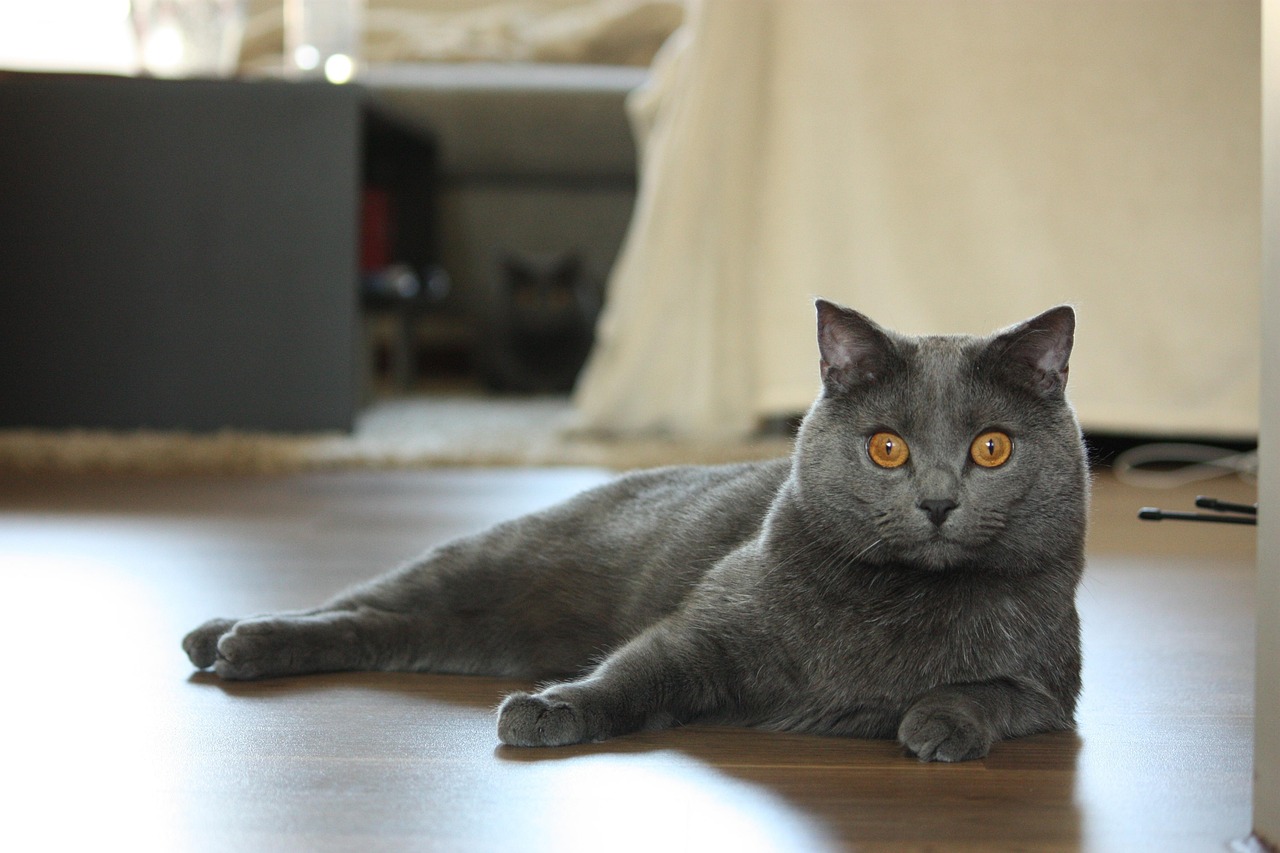
Heading over to France, now, where the gorgeous Chartreux originates from. Stocky and rounded in appearance with a thick blue double coat, copper or orange-colored eyes, and a mouth shape that gives the impression that they’re permanently smiling, the Chartreux is pretty much a loveable chunk with a fantastic personality to go with their beautiful appearance.
The Chartreux is estimated to date back to the 18th century or before. They were bred by Carthusian monks who appreciated the Chartreux’s pest-control capabilities. The breed was saved from extinction by a post-WWII breeding program but is still somewhat rare to this day.
5. Aegean Cat
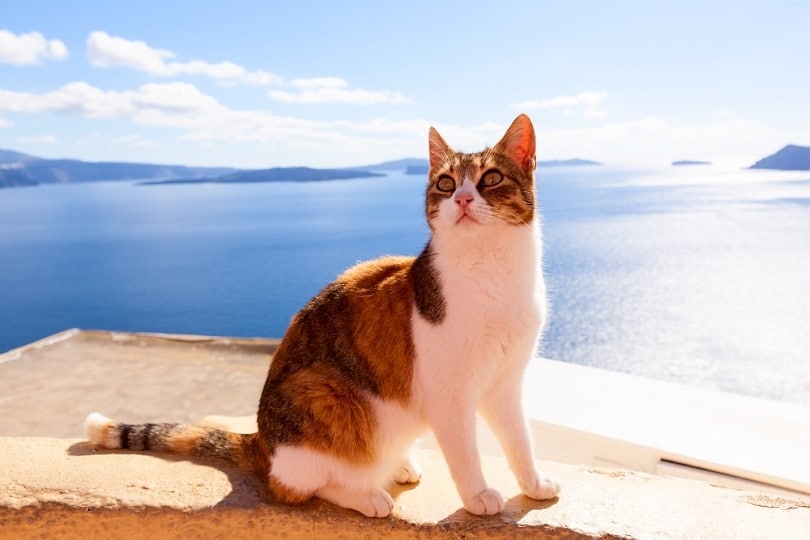
The Aegean cat is likely the descendant of Cypriot cats that made their way into Greece, according to archeologists. If you’ve ever traveled to the Greek islands, you may have spotted these cats chilling out here, there, and everywhere, reveling in their laid-back lives in the sun. They are of medium build, have round-tipped ears and almond-shaped eyes, and their coats can have two or three colors.
Aegean cats have been roaming the Greek islands for a long time, and so are pretty used to being around people. They’re friendly cats with an adventurous streak, so if you get one, be sure to offer plenty of playtime and high-up places (cat trees, bookshelves, etc.) for your Aegean to explore and observe the world.
6. Norwegian Forest Cat

If you’re a fan of large, long-haired cats, a Norwegian Forest Cat might be just what you’re looking for. These striking northern European cats originated in Scandinavia and even have a place in Viking mythology. They are pretty enormous cats, typically weighing in at between 5.8 and 10 kg (12–22 pounds), have pointy, lynx-like ears, and a muscular body that harks back to the breed’s hunting days.
The neck is so thick that it appears to blend in with the head and the fur is long and puffy, giving the Norwegian Forest Cat a dignified, majestic look. This matches their personalities, as they’re said to be quiet, stoic, gentle, independent, and not the biggest lap cats due to their tendency to get hot quickly. That said, many still enjoy being petted or a good old behind-the-ear scratch.
7. Manx
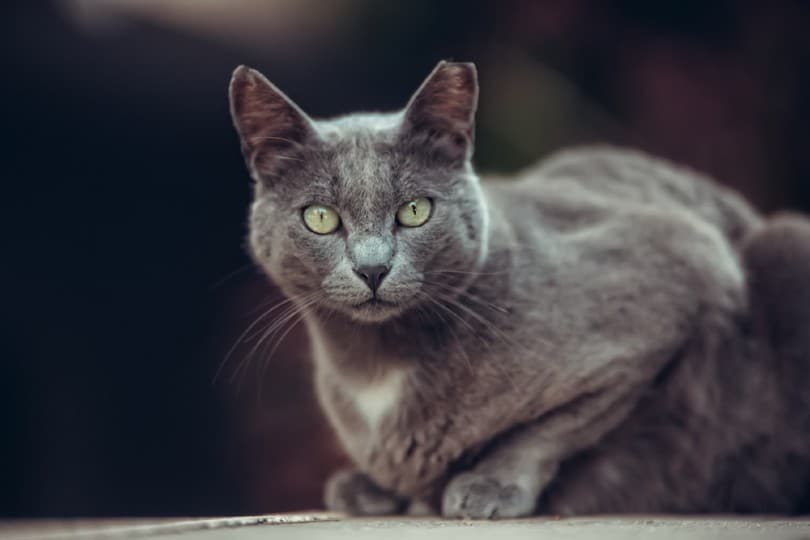
The Manx hails from the popular British holiday destination, the Isle of Man. They often have absent or short stubs for tails as the result of a naturally-occurring genetic mutation, though some do have longer tails. They’re medium to large cats with short legs, stocky bodies, and rounded faces. They can be short or long-haired, with long-haired Manx being referred to as Cymric. Some consider the Cymric an altogether separate breed.
Manx cats are very loving and quickly grow attached to their family members. As such, they do not appreciate long stints left alone and enjoy playtime with their people very much. These fun-loving cats make great companions for families because of how much they like spending time with people.
8. Ukrainian Levkoy
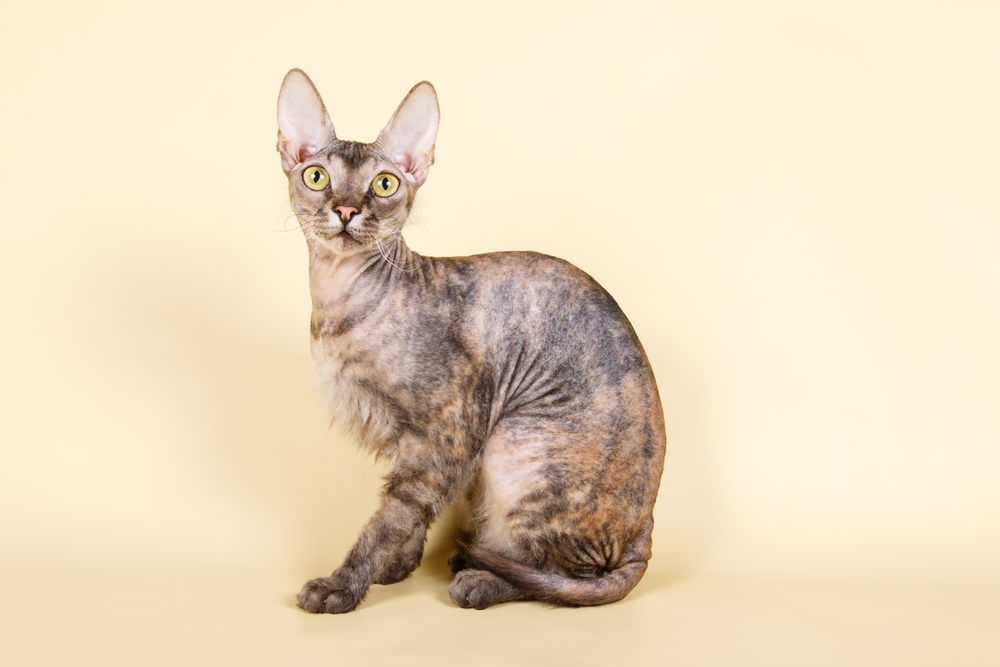
The Ukrainian Levkoy is one of the most unique-looking cats in the world. They were bred in Ukraine starting from the year 2001, so they are also one of the most modern breeds. Ukrainian Levkoys are hairless or almost hairless, have triangular, wedge-shaped heads, wide-set ears, almond-shaped eyes, and a slender build. Their skin coloring varies, with some being black and others being grey, white, and/or pink-skinned.
Though the Ukrainian Levkoy’s unusual appearance puts off some cat lovers, they’re incredibly sweet, gentle-natured cats that give a lot of love back to those who care for them. They’re often friendly with children, love to play, and greatly appreciate extra cuddles due to their lack of fur.
9. German Rex
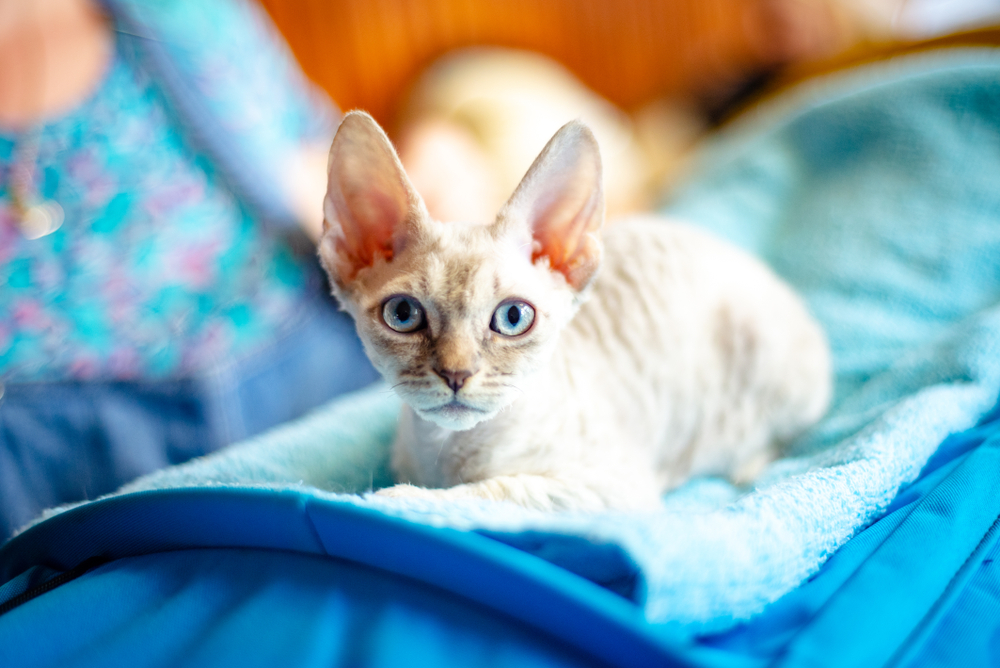
If you were to look at the German Rex and the Devon Rex side by side, you may be surprised to learn that completely different genetic mutations were responsible for each breed’s curly fur because the two look so alike. German Rexes descend from a cat called Laemmchen that once roamed the grounds of a hospital in East Germany. Laemmchen produced a litter with two curly-coated kittens, and later German Rexes were bred from them.
German Rexes are small and delicate in appearance but a surprisingly hardy breed that enjoys play and exercise. Like the Devon Rex, the German Rex has a tiny head with large, pointed ears, and big, round eyes. Many coat colorings and patterns are possible. Temperament-wise, they’re energetic, affectionate, and like to be involved in everything you’re doing.
10. Birman
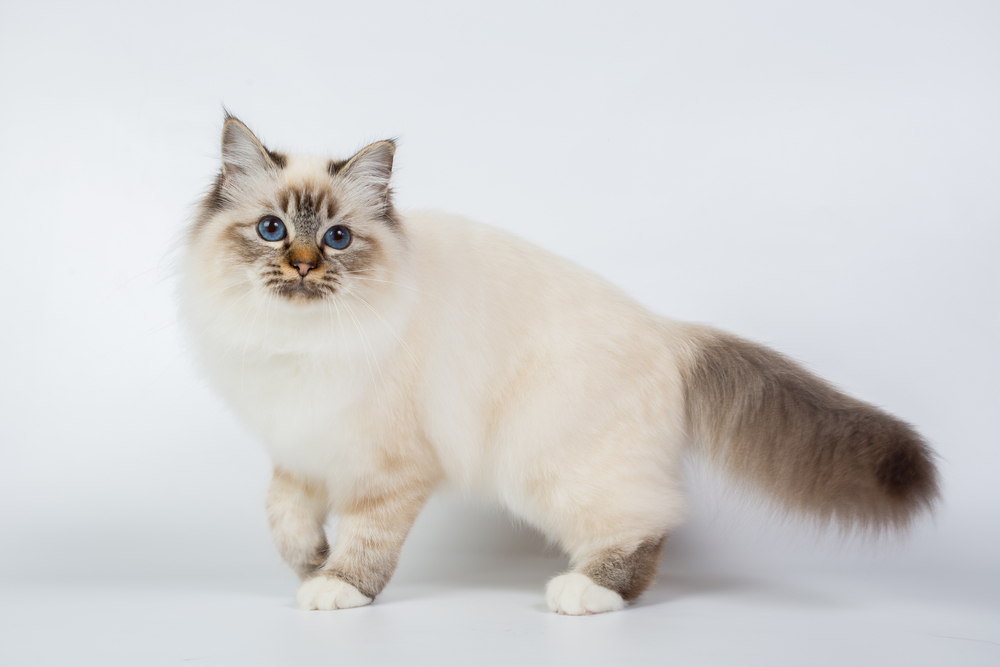
The Birman originated in Burma and France. The breed is said to have originated in Burma and was later brought over to France, where it was revived after near-extinction at the close of WWII. Birmans are stunning cats with long fur, blue eyes, and point colorations including cream, lilac, seal, chocolate, and blue.
Birmans are also famous for their fantastic personalities and are said to be easygoing, affectionate, and people-oriented. This makes Birmans a good choice for both loving families, couples, and single people. Basically—anyone who is good to them can expect to be showered in love in return!

Final Thoughts
We’ve been through a rather exciting array of European cat breeds in this post. Please bear in mind that the cat breeds above are in no particular order—they’re all great and choosing a favorite would be simply impossible! Best of all, whichever breed you choose, you’re sure to have plenty of good times and fun memories ahead.
Featured Image Credit: Nennieinszweidrei, Pixabay
